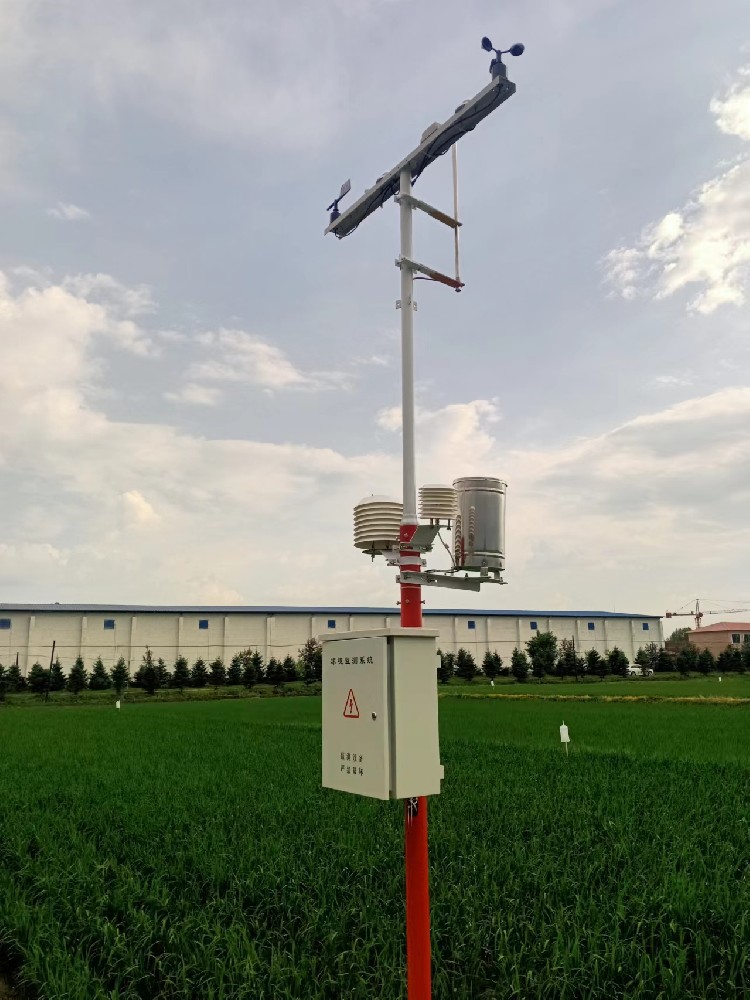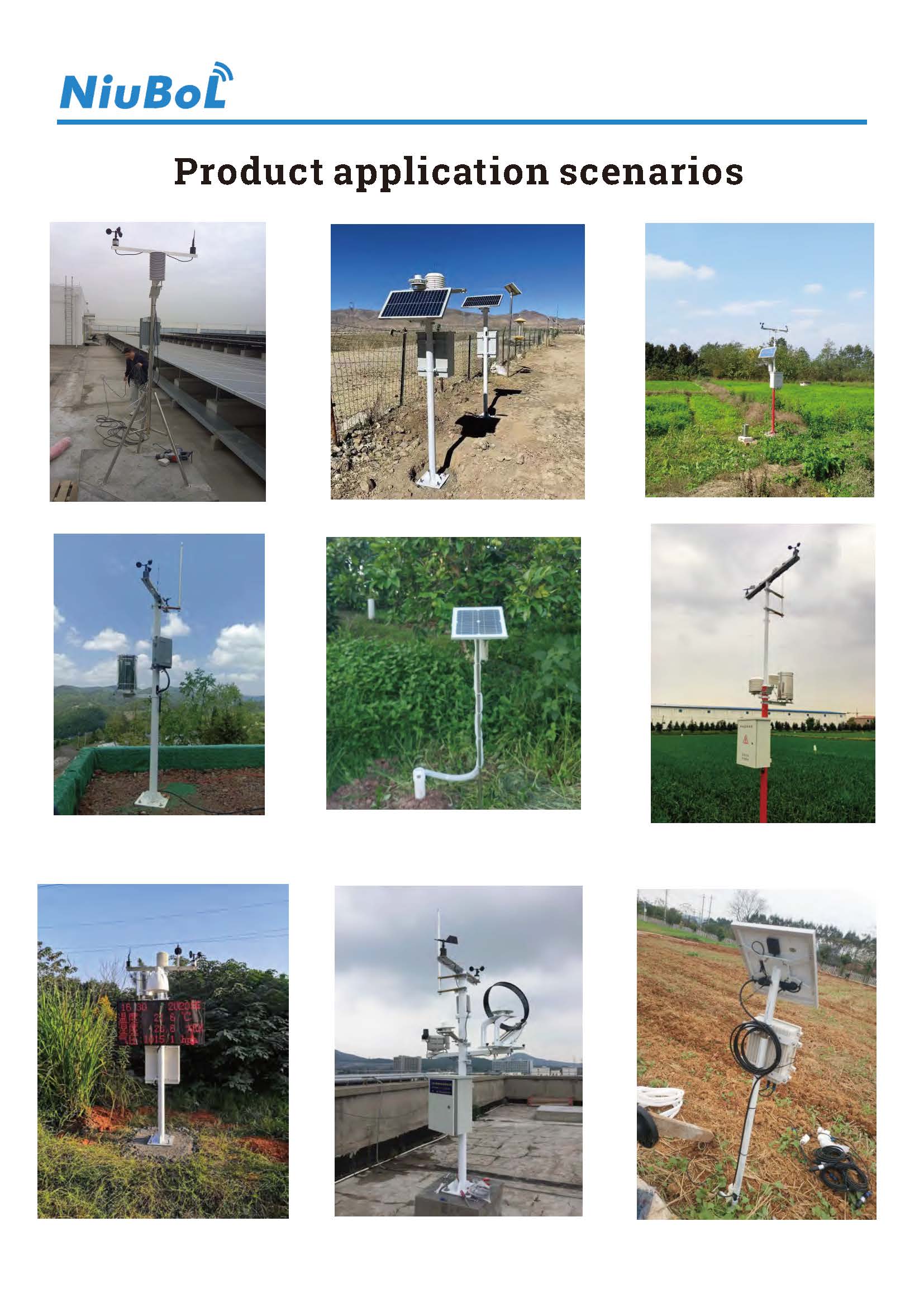

— Blogs —
—Products—
 Consumer hotline +8618073152920
Consumer hotline +8618073152920 WhatsApp:+8615367865107
Address:Room 102, District D, Houhu Industrial Park, Yuelu District, Changsha City, Hunan Province, China
Product knowledge
Time:2024-09-24 16:28:57 Popularity:1416
With the rapid development of meteorological science and technology, small weather stations are increasingly widely used in various fields, becoming an indispensable weather monitoring tool for schools, agricultural cultivation, environmental protection and urban planning. However, the question of what range of meteorological data can be monitored by small weather stations has often aroused concern. In fact, the monitoring range of a small weather station is affected by a variety of factors, including geographic location, terrain characteristics, climatic conditions and monitoring needs. The following is a comprehensive analysis and improvement of the monitoring range of small weather stations in different areas.
In mountainous areas, the monitoring range design of small weather stations needs to fully consider factors such as terrain complexity, risk of geologic hazards and annual precipitation, etc. Monitoring range: In mountainous areas, the monitoring range of small weather stations needs to be fully considered.
- Monitoring range: In mountainous areas, the average spacing of the monitoring range of small meteorological stations is less than 25 kilometers. This setting helps to capture the unique microclimate characteristics of mountainous areas, and provides a scientific basis for disaster prevention and mitigation, ecological protection, and resource development and utilization.
- Considerations: Mountainous areas have complex topography and variable climate, and the design of the monitoring range needs to take into account topographical features, the occurrence of geologic hazards, and the average annual precipitation.
Urban areas are densely populated, with many buildings and complex and changing meteorological conditions. Therefore, the layout of small meteorological stations in urban areas needs to be denser to meet the demand for high temporal and spatial resolution of meteorological data. Such a layout helps to accurately reflect the urban heat island effect, air quality changes and other meteorological phenomena unique to urban areas, and provides strong support for urban planning, traffic management and environmental protection.
- Monitoring range: The average spacing of small meteorological stations in urban areas is less than 10 km, and in key areas (such as commercial centers, transportation hubs, etc.), the distance needs to be shortened to less than 5 km.
- Considerations: The design of the monitoring range in urban areas needs to be based on the annual precipitation, population density and the characteristics of disasters.
Plain areas have flat terrain and relatively uniform meteorological conditions. In such areas, the monitoring range of small weather stations can be appropriately relaxed. Such a setup can not only meet the basic demand for meteorological data, but also effectively control the construction costs and maintenance difficulties, and provide a reliable basis for agricultural production, water resource management and weather forecasting.
- Monitoring range: The detection range of small meteorological stations in the plains is generally 20 to 25 kilometers.
- Considerations: the plains are relatively flat and the climate is relatively stable, so the monitoring range can be relatively large.
Coastal areas are significantly affected by the ocean climate, and the meteorological conditions are complex and variable. Especially in the coastal areas of large river basins, the need for meteorological monitoring is more urgent.
- Monitoring range: In coastal large river basins, the average spacing of small meteorological stations is 10 kilometers.
- Considerations: The climate of coastal areas is strongly influenced by the sea, and the design of the monitoring ranges needs to take into account wind direction, wind speed and possible coastal hazards.
These ranges are recommendations based on general conditions and need to be adjusted in practical applications to take into account specific environmental characteristics and monitoring purposes.
For example, scientific research projects may require denser deployment of points to obtain more detailed data, while routine agricultural monitoring may use wider intervals.
In addition to geographical location and terrain characteristics, the monitoring range of a small weather station also needs to take into account other factors, such as the performance parameters of the sensors of the weather station, data transmission capability, data processing capability, as well as equipment maintenance and calibration. The following are some of the major influencing factors:
Sensor precision: the sensor is the key component for collecting meteorological data, and its precision directly affects the accuracy of measurement data. If the precision of the sensor is not high, it will lead to errors in the measurement data.
Sensor stability: the stability of the sensor is also an important factor affecting the accuracy of the data. Sensors may be aging, damaged or subject to external interference (such as electromagnetic interference) and measurement deviation.
Sensor sensitivity: the higher the sensitivity of the sensor, the greater its monitoring range may be.

Terrain and building blockage: The surrounding buildings, mountains, etc. may block the flow of wind, affecting the accuracy of wind speed and direction measurement. At the same time, terrain ups and downs will also affect the distribution and measurement of temperature, precipitation and other meteorological elements.
Electromagnetic interference: Strong electromagnetic fields in the vicinity, such as high-voltage power lines and large motors, may interfere with the data acquisition and transmission of the weather station, resulting in data loss or transmission errors.
Extreme weather conditions: Under extreme weather conditions, such as violent storms, lightning, etc., the weather station equipment may be damaged, thus affecting data monitoring.
Data transmission capability: Different data transmission technologies will also affect the coverage of monitoring data.
Equipment maintenance: weather station equipment requires regular maintenance and repair to ensure its normal operation and accurate measurement. If the equipment is not maintained in a timely manner, malfunctions or measurement deviations may occur.
Calibration: Weather station equipment needs to be calibrated regularly to verify the accuracy of its measurement data. Calibration ensures that the equipment maintains high accuracy and stability after a long period of operation.
The design basis for the monitoring range of a small weather station involves the following key factors:
1. Topography and geomorphology: the ups and downs of the terrain have a significant impact on the airflow, mountainous and hilly areas due to the complexity of the terrain, the local climate differences, the need for a more intensive deployment to cover the different heights and terrain of the meteorological changes, so the monitoring range will be reduced accordingly.
2. Climatic conditions: the climatic characteristics of different regions vary significantly, such as coastal areas need to pay attention to sea and land winds, typhoons, etc., while arid areas focus on temperature and humidity monitoring. The stability of the climate also determines the density of monitoring points, and extreme weather-prone areas may require a tighter network.
3. Population density and economic activities: Urban and densely populated areas have a high demand for meteorological services, especially for disaster warning, and require smaller monitoring spacing to ensure safety. In these areas, the layout of small weather stations will be denser to provide immediate weather information.
4. Agricultural needs: Agriculture is highly dependent on meteorological data, especially in precision agriculture, where the monitoring spacing needs to be set according to the specific needs of the crop growing area, and may need to be deployed in specific farmlands or greenhouses to ensure the relevance and usefulness of the data.
5. Technology and costs: Advances in monitoring technology can increase the monitoring capacity of individual stations, potentially expanding the coverage of individual weather stations. However, equipment costs, maintenance costs, and data processing capabilities are also important factors in determining the density of deployment.
6. Historical disaster data: The occurrence and frequency of disasters in the past is also one of the design bases, and disaster-prone areas need more detailed monitoring networks for early warning.
7. Laws, regulations and standards: national or regional meteorological monitoring standards and norms will also have an impact on the design of the monitoring scope to ensure the standardization and comparability of data.
In summary, the design of the monitoring range of small weather stations is a decision-making process that comprehensively considers a variety of factors, aiming at realizing the effective monitoring of meteorological changes in a specific area through the optimized deployment strategy.

Conclusion
The monitoring range of a small weather station is the result of a multi-dimensional consideration, which is deeply influenced by multiple factors such as terrain characteristics, climate conditions and sensor performance. In actual deployment, these factors must be carefully analyzed to scientifically plan the layout and design of the monitoring network, so as to ensure that the collected meteorological data are both accurate and representative.
Given the highly variable nature of the monitoring range, it is recommended that users work closely with professional technicians or equipment suppliers at the planning stage to customize solutions for specific application scenarios. Such cooperation can help maximize the effectiveness of small weather stations and ensure that they play a key role in agricultural management, education and research, etc., providing timely and accurate weather information.
In order to ensure the quality of weather data, a series of enhancement measures need to be taken. These include the selection of high-precision and high-stability sensors to capture subtle meteorological changes; the careful selection and optimization of the station's installation location to reduce environmental interference; and the establishment of a strict equipment maintenance and calibration mechanism to ensure the stability and accuracy of long-term operation. Through these comprehensive means, small-scale weather stations can continuously and reliably provide valuable meteorological support to various fields.
Related recommendations
Sensors & Weather Stations Catalog
Agriculture Sensors and Weather Stations Catalog-NiuBoL.pdf
Weather Stations Catalog-NiuBoL.pdf
Related products
 Combined air temperature and relative humidity sensor
Combined air temperature and relative humidity sensor Soil Moisture Temperature sensor for irrigation
Soil Moisture Temperature sensor for irrigation Soil pH sensor RS485 soil Testing instrument soil ph meter for agriculture
Soil pH sensor RS485 soil Testing instrument soil ph meter for agriculture Wind Speed sensor Output Modbus/RS485/Analog/0-5V/4-20mA
Wind Speed sensor Output Modbus/RS485/Analog/0-5V/4-20mA Tipping bucket rain gauge for weather monitoring auto rainfall sensor RS485/Outdoor/stainless steel
Tipping bucket rain gauge for weather monitoring auto rainfall sensor RS485/Outdoor/stainless steel Pyranometer Solar Radiation Sensor 4-20mA/RS485
Pyranometer Solar Radiation Sensor 4-20mA/RS485
Screenshot, WhatsApp to identify the QR code
WhatsApp number:+8615367865107
(Click on WhatsApp to copy and add friends)
